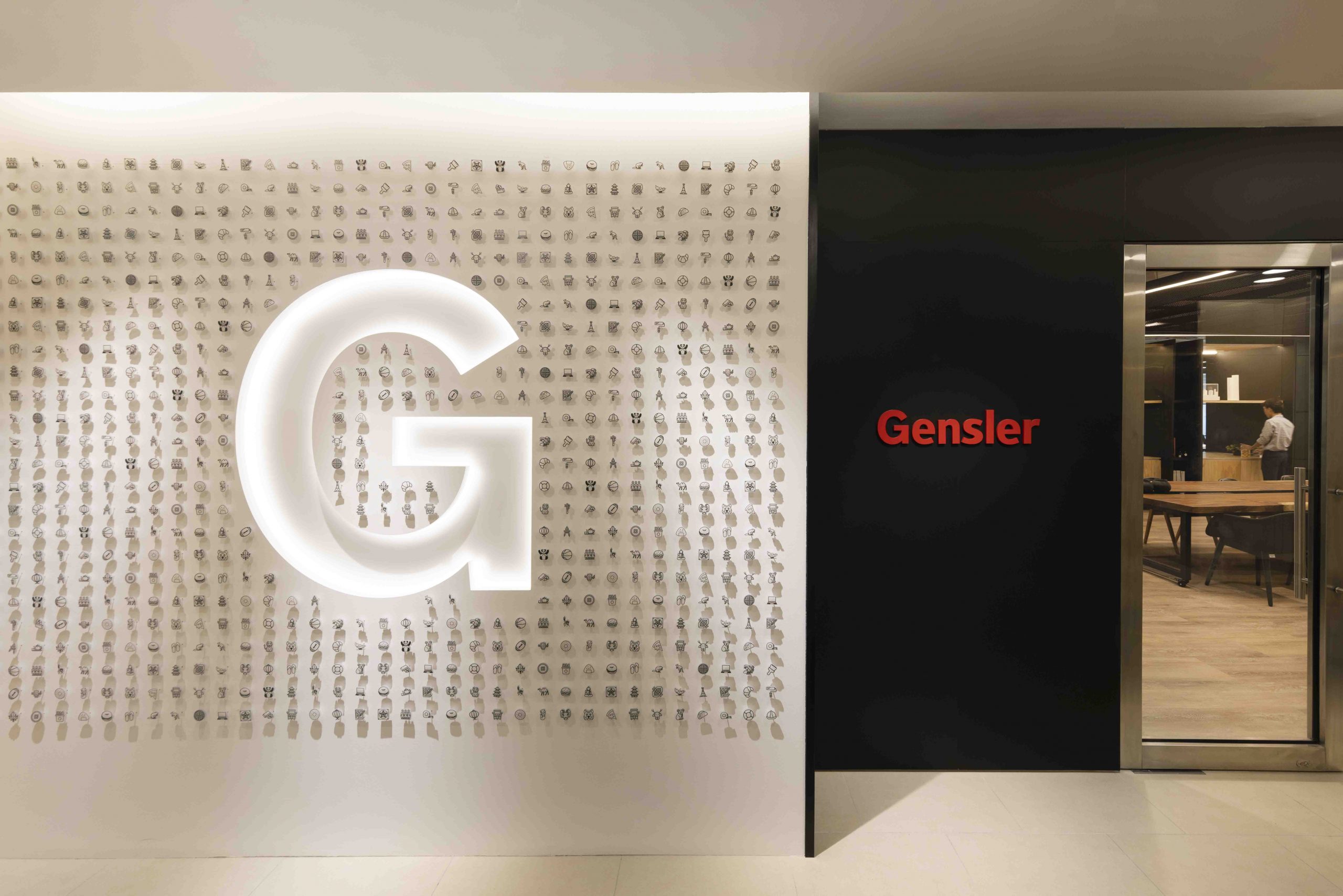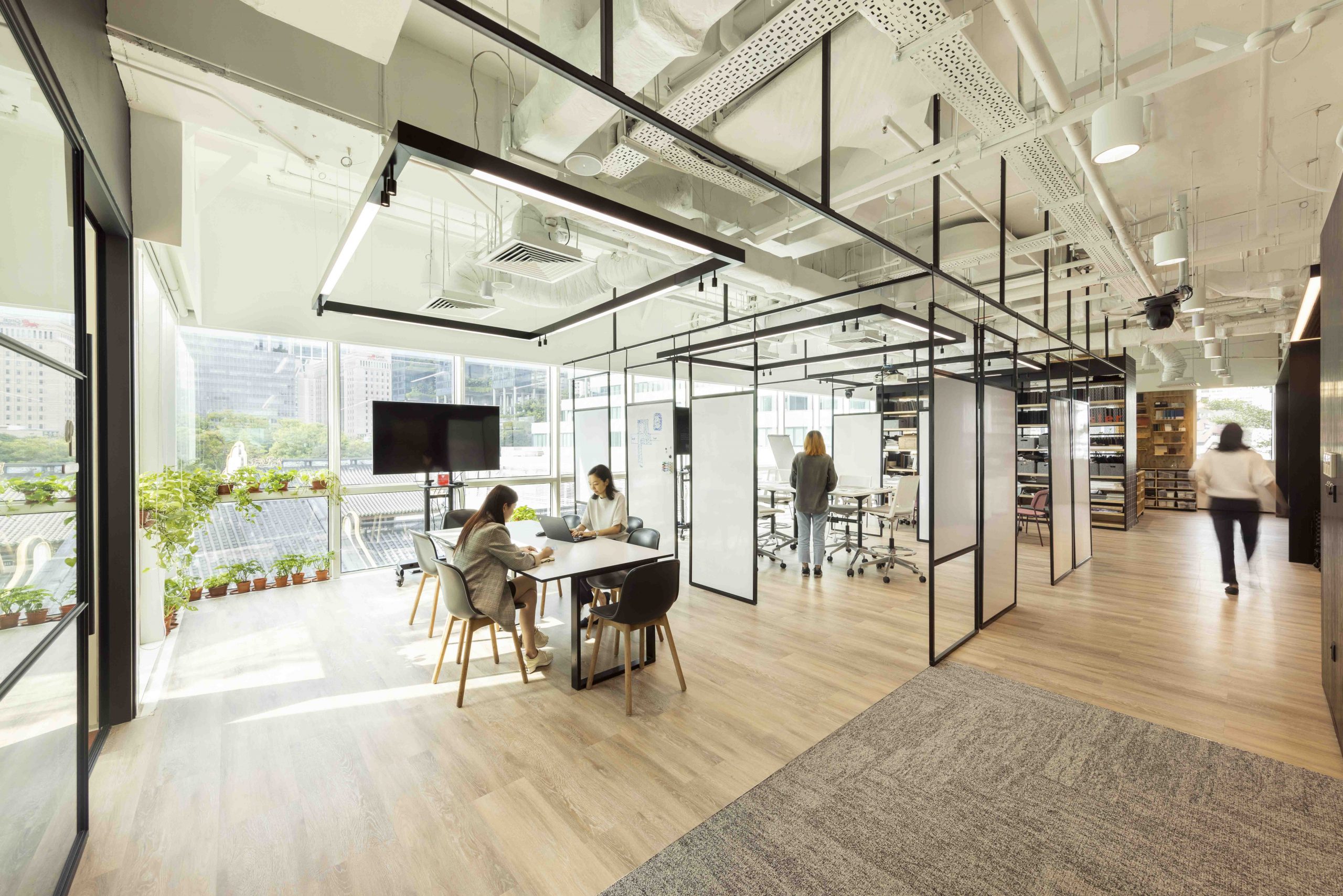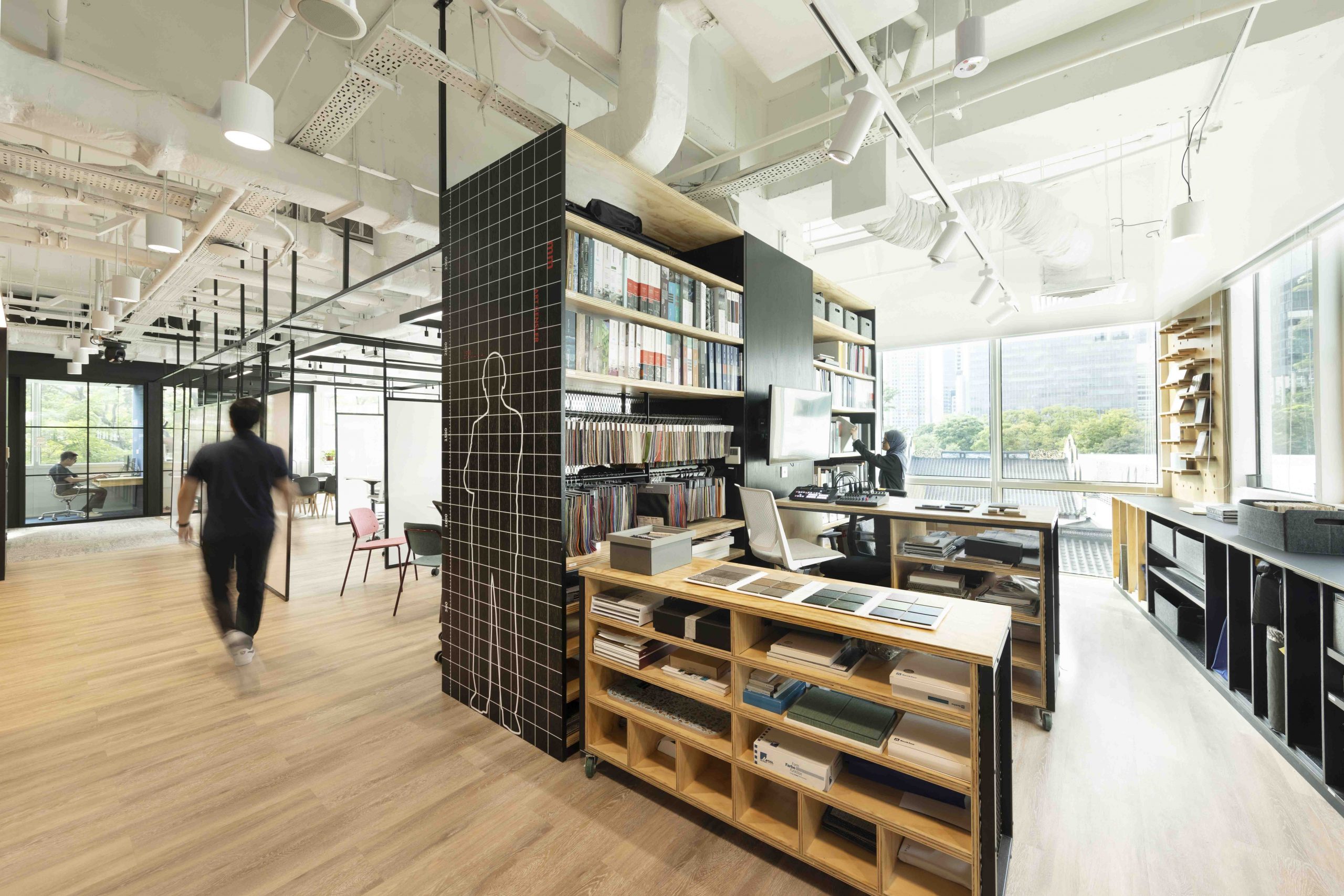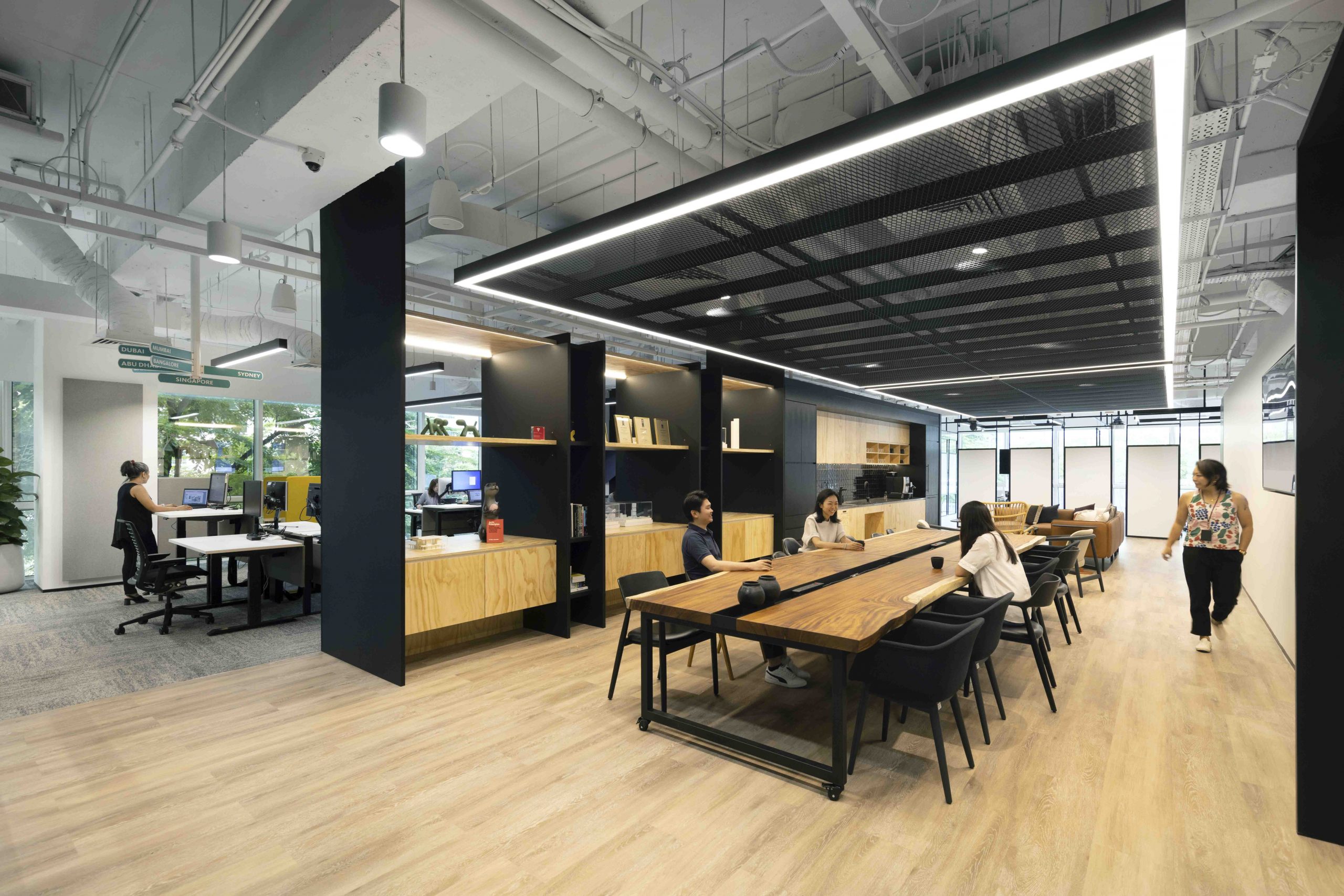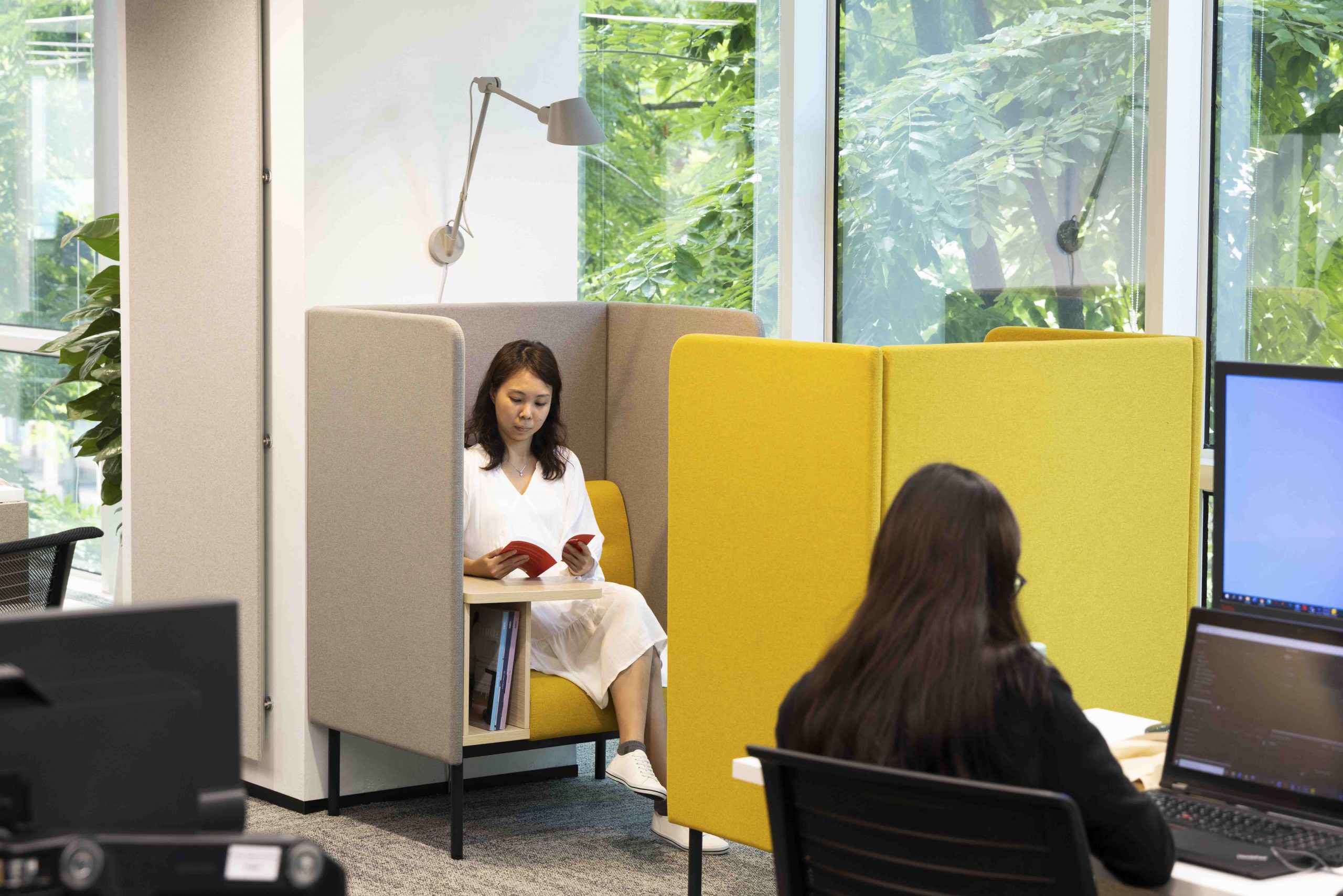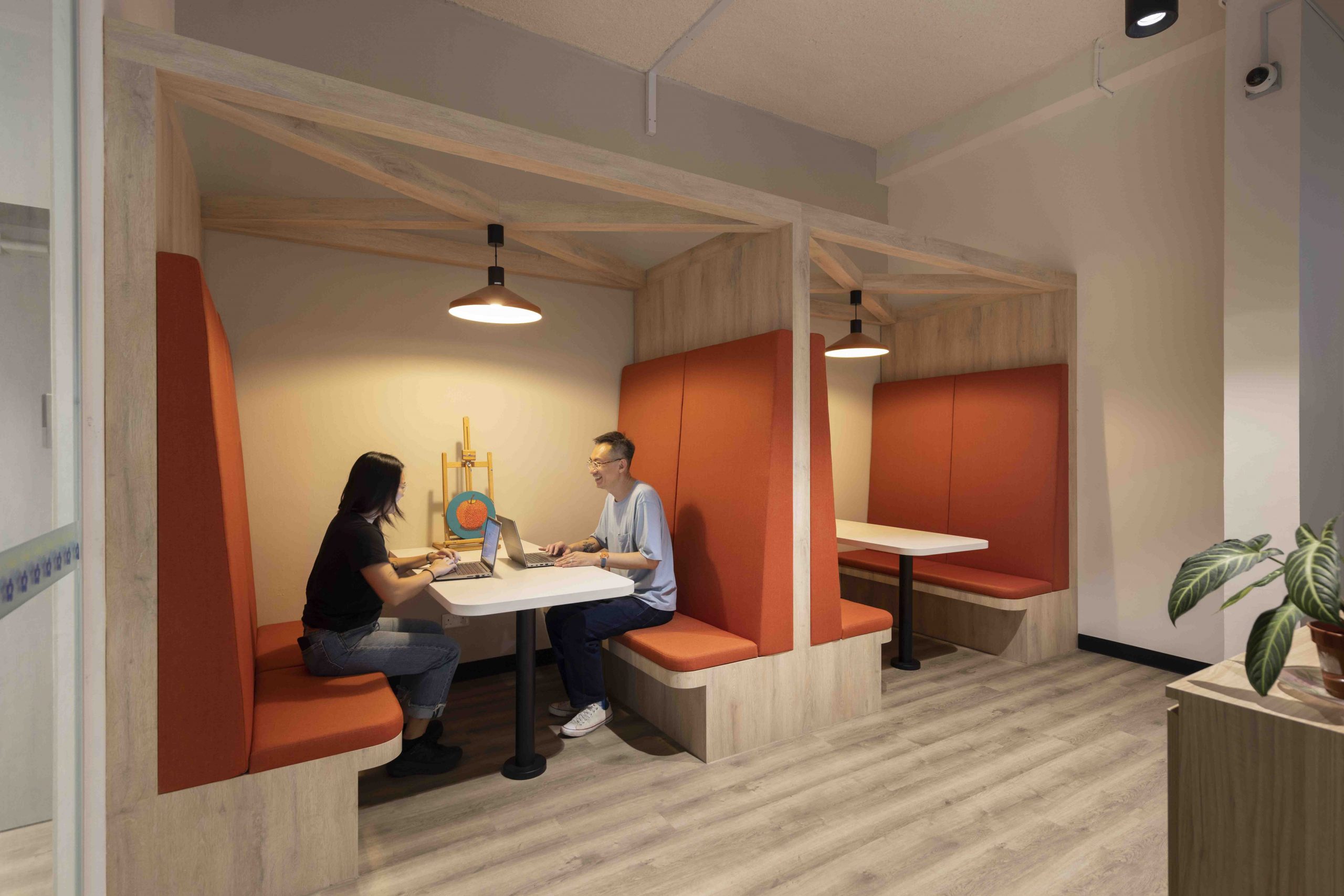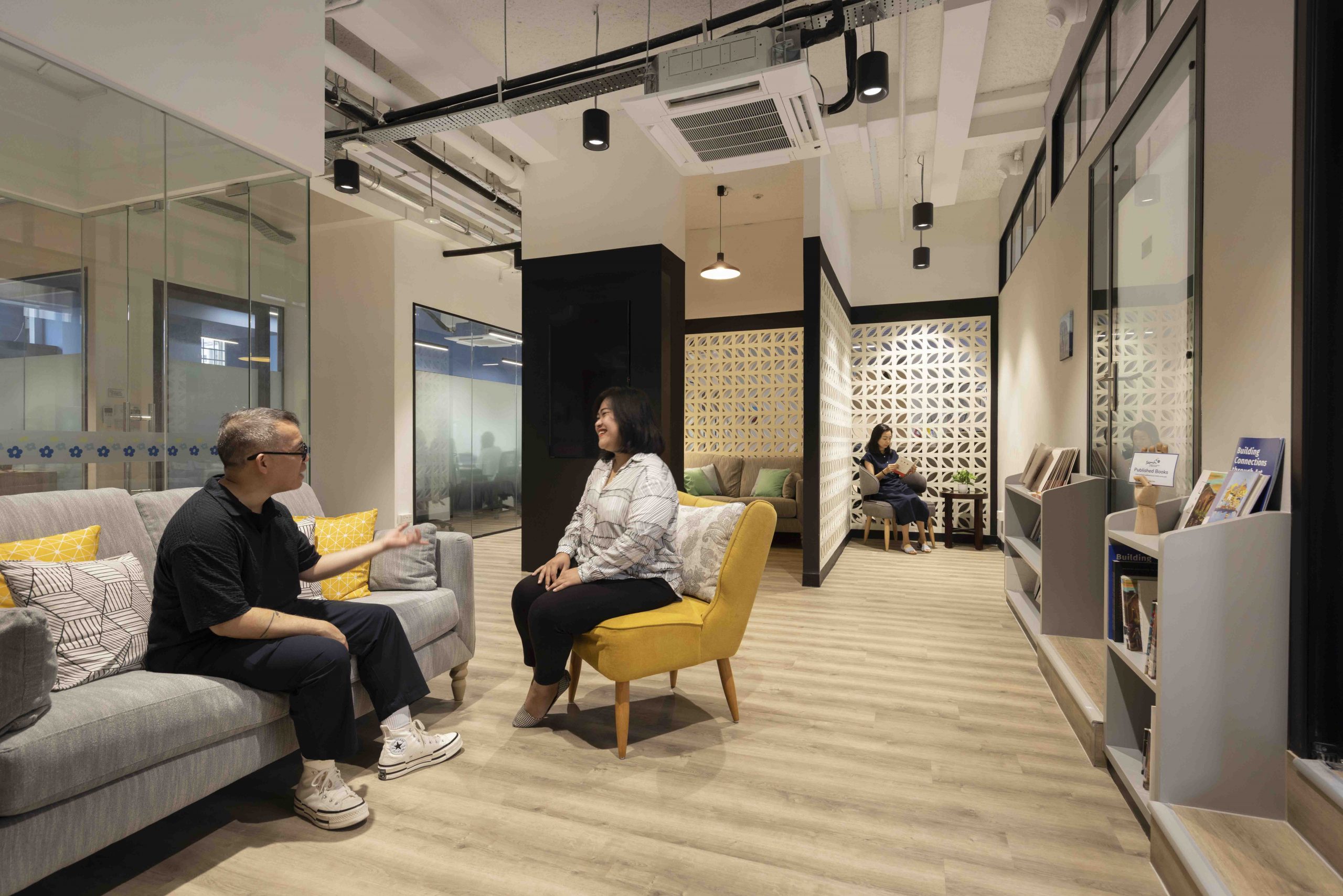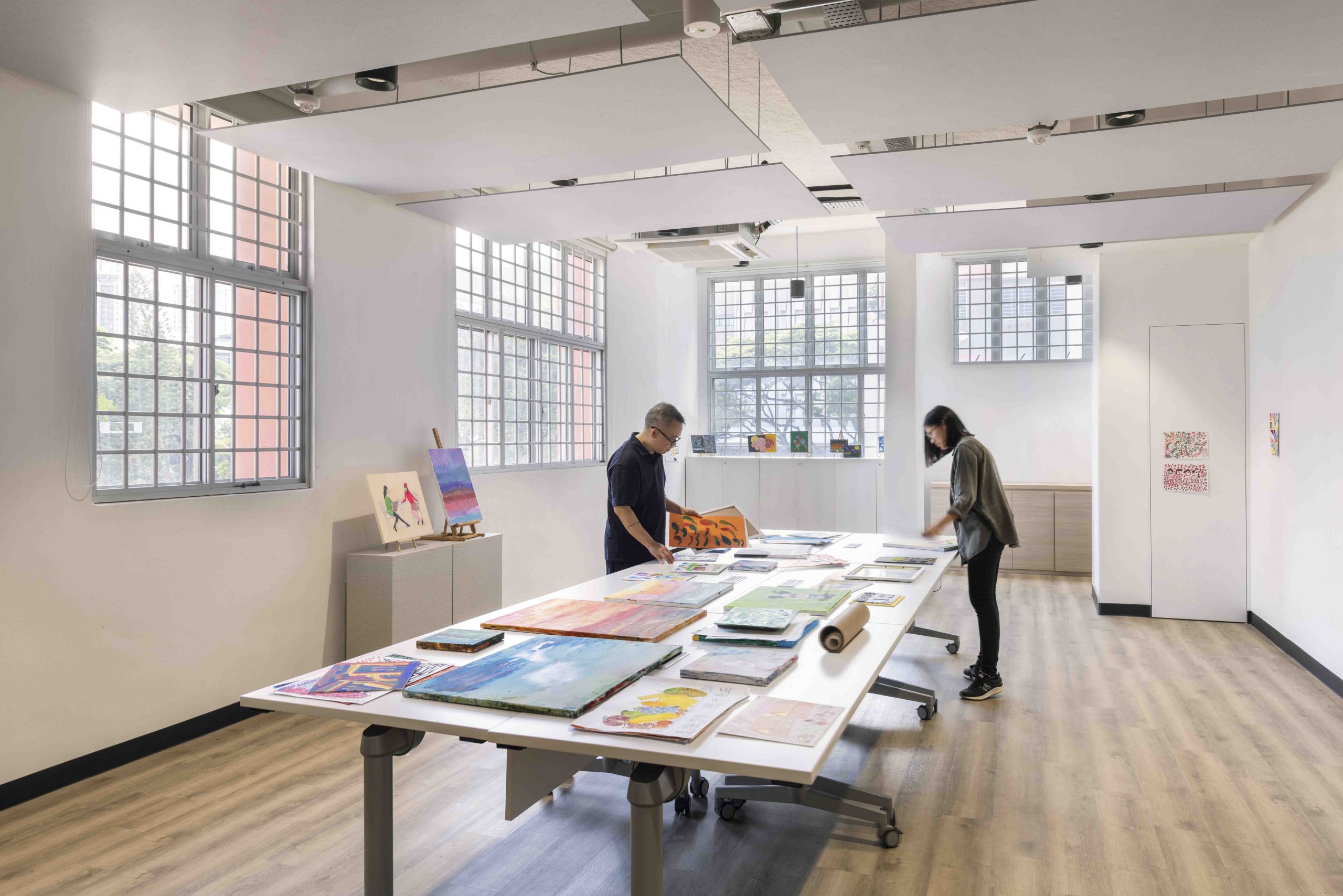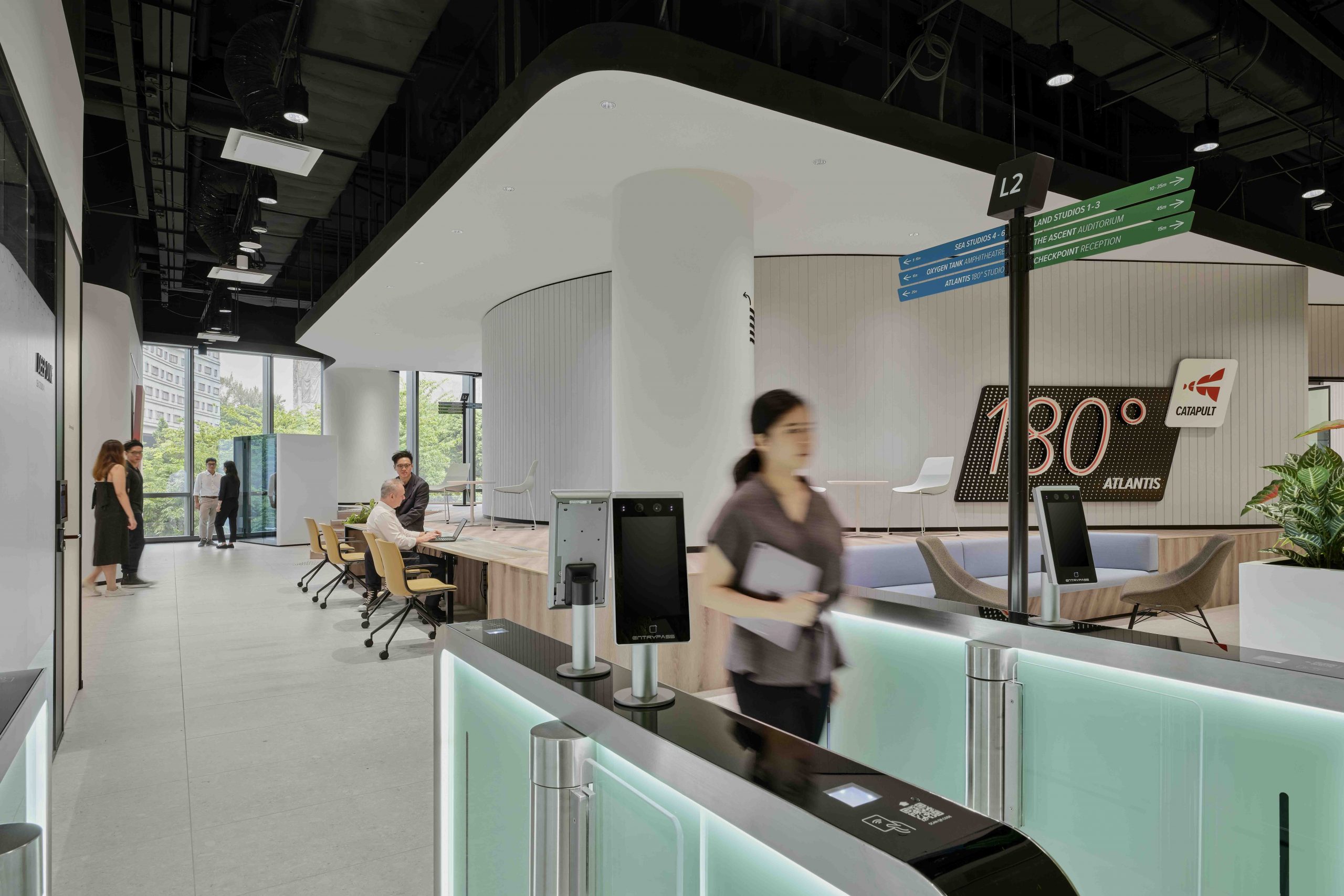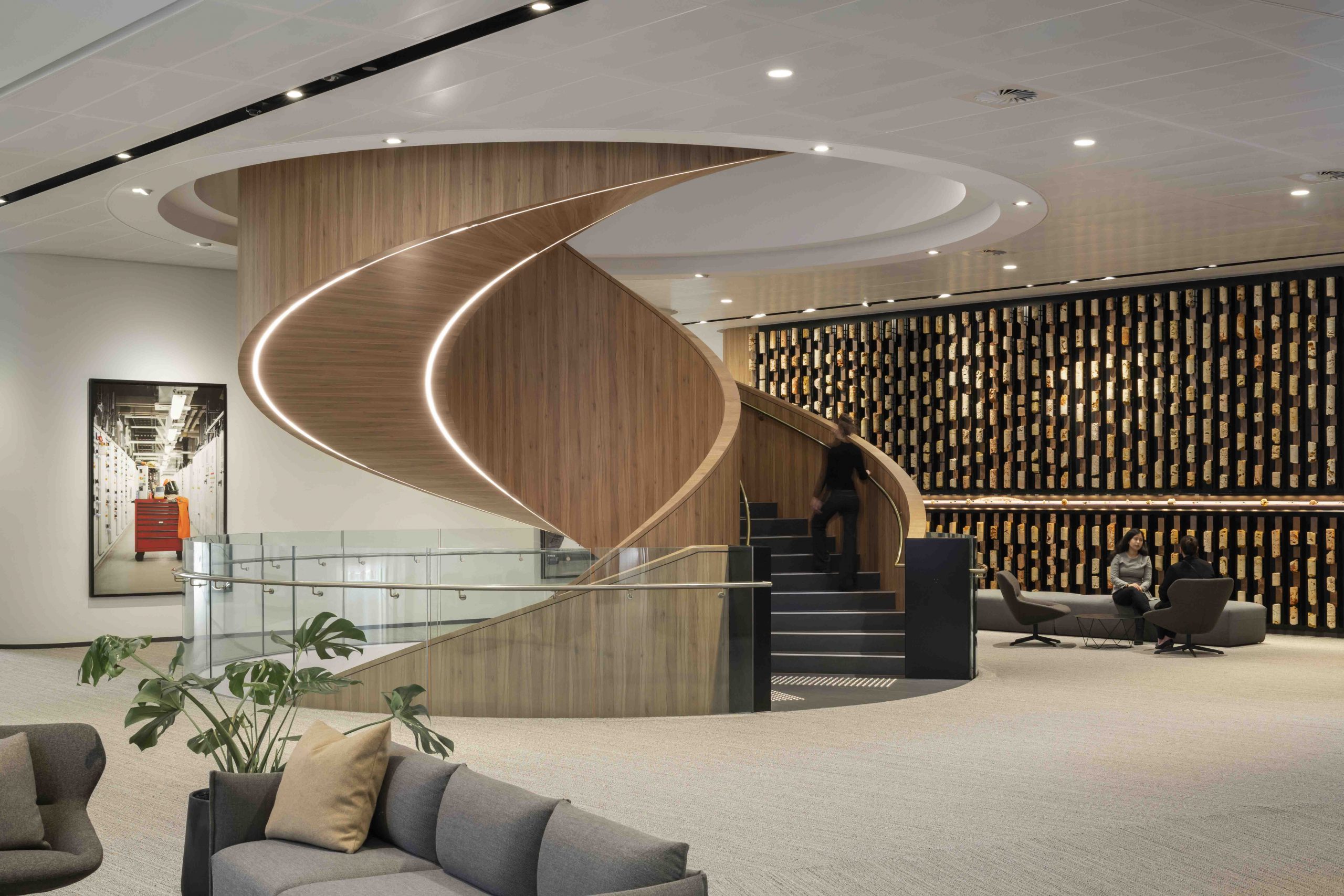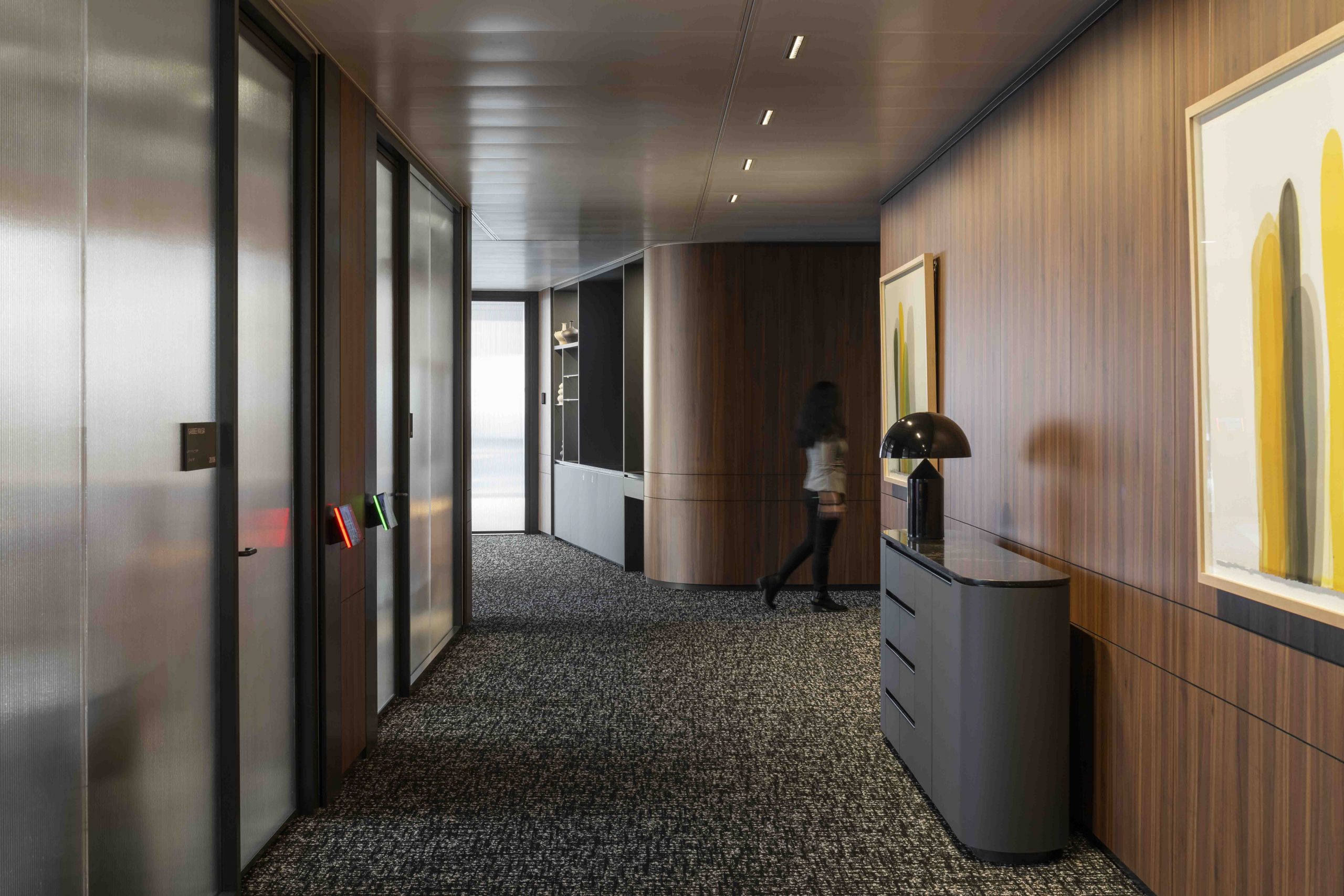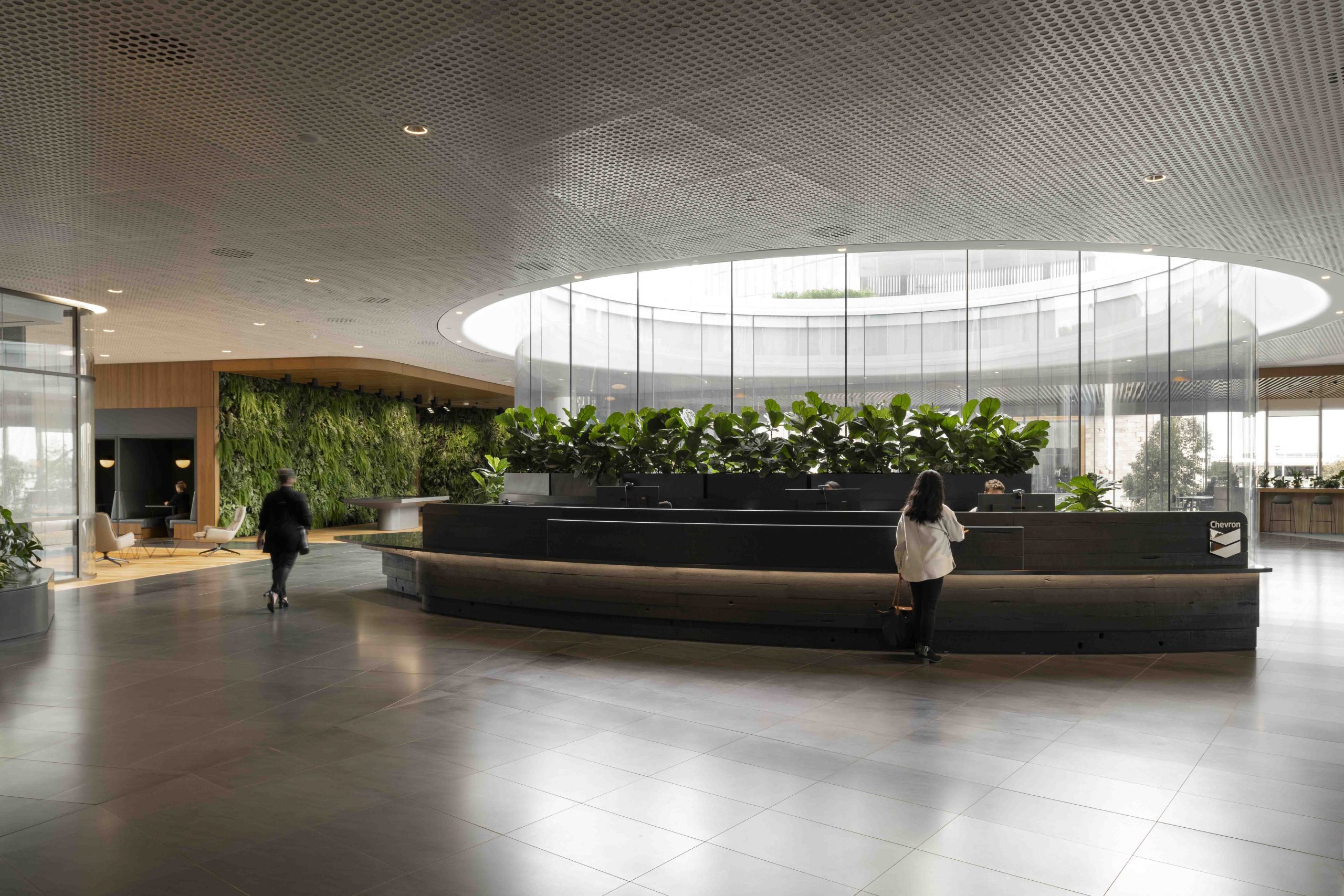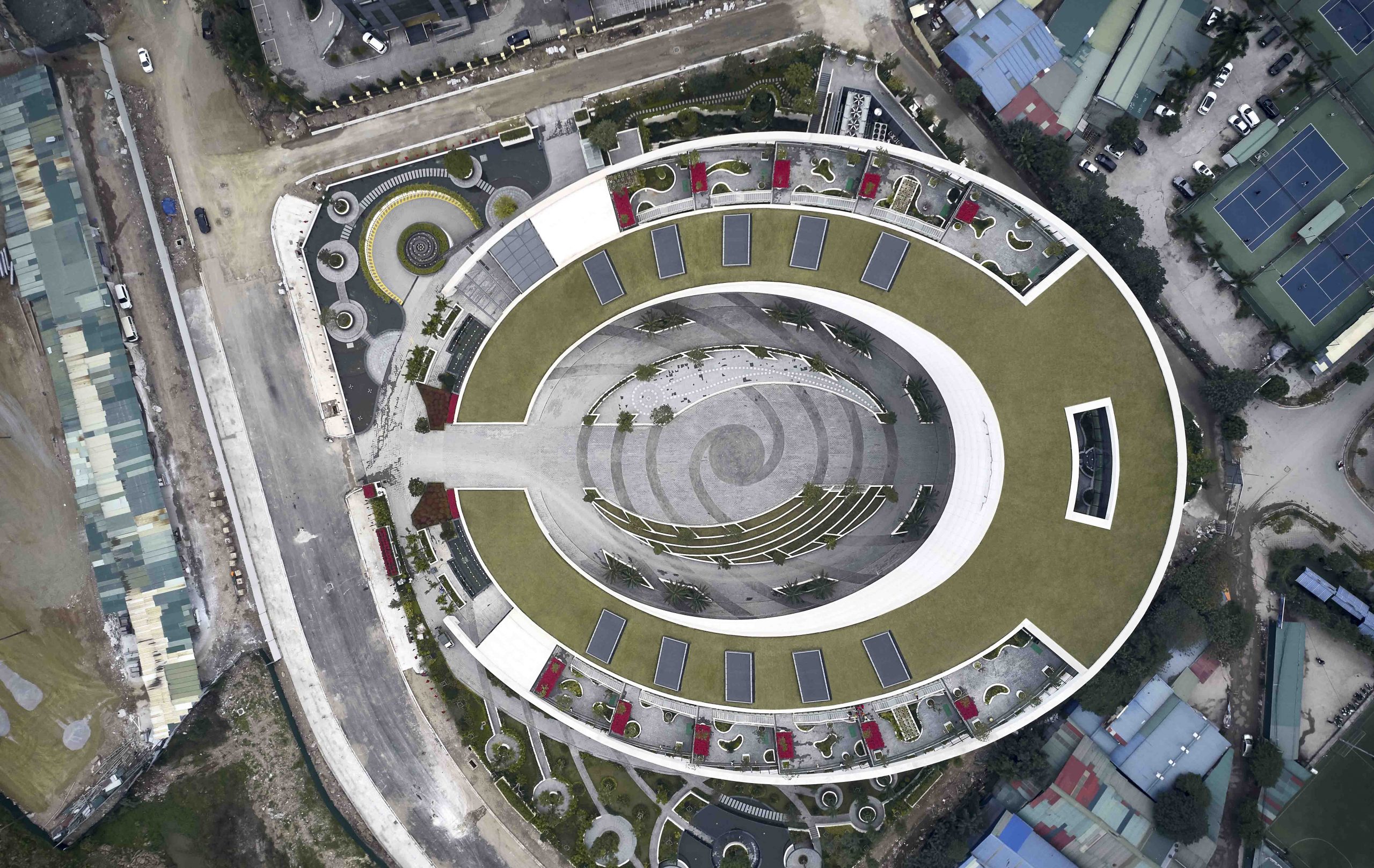As Principal and Managing Director of Gensler’s Singapore office, Angela Spathonis spearheads the development and execution of pivotal business strategies. Garnering over two decades of experience, Angela specialises in pushing design boundaries across workplace, retail, residential, and hospitality sectors, working closely with teams and clients to deliver innovative, sustainable solutions that uphold design excellence on multidisciplinary projects on a global scale. Asia Designers Directory connects with Angela to gain insights into her leadership approach and to explore significant industry trends.
Gensler has a large global presence and a multidisciplinary design approach. Can you share strategies that are employed to foster collaboration within teams, given the diversity in skill sets and backgrounds of individuals?
At Gensler, we believe that diversity in skill sets, backgrounds, and perspectives is fundamental to driving innovation in our field. When individuals with varied experiences and expertise collaborate, they bring forth a wealth of ideas and insights that ignite creativity and pave the way for groundbreaking solutions.
To nurture this diversity, we are deeply committed to cultivating an inclusive culture where every team member feels valued, respected, and empowered to contribute their unique talents. We celebrate diversity in all its forms and actively seek to create an environment where differences are accepted and embraced. Additionally, we leverage technology and tools to facilitate seamless communication and project management across our global teams. Whether our colleagues are working across different time zones or collaborating on projects halfway across the world, these digital solutions enable us to stay connected, share ideas, and collaborate effectively, irrespective of geographical barriers.
Furthermore, we encourage cross-disciplinary collaboration and knowledge sharing within our teams. Through brainstorming sessions and design charrettes, individuals from diverse backgrounds come together to exchange ideas, challenge assumptions, and explore innovative approaches to design challenges. By breaking down silos and fostering an environment of openness and collaboration, we enable our teams to leverage their collective expertise to deliver truly transformative design solutions.
- Gensler Singapore
- Gensler Singapore
- Gensler Singapore
- Gensler Singapore
- Gensler Singapore
Can you provide insights into your philosophy and approach when it comes to nurturing and developing teams? What qualities do you prioritise when building your team?
To me, nurturing and developing teams is not just about assembling a group of individuals but cultivating a dynamic ecosystem where each member thrives and contributes to the collective success. I believe in fostering an environment of trust, collaboration, continuous growth, and making the world a better place through our passion.
Trust is the bedrock upon which strong teams are built. It is important to cultivate a culture where team members feel safe to express their ideas, voice their concerns, and take calculated risks. This requires transparency, ownership, and consistency in both words and actions. When trust permeates the team, individuals feel empowered to contribute their best work, knowing that their efforts are valued and respected.
Regarding collaboration, my goal is to cultivate an environment where collaboration is not merely encouraged but becomes an integral part of our ethos. By leveraging the diverse perspectives, skills, and experiences of team members, we can tackle complex challenges more effectively and develop innovative solutions. I also believe in fostering a culture of continuous growth, where individuals are encouraged to stretch beyond their comfort zones, acquire new skills, and stay abreast of emerging trends and technologies. This requires providing ample opportunities for professional development, mentorship, and feedback, as well as creating a supportive environment that celebrates experimentation and learning from failures. By investing in the growth and development of our team members, we not only enhance their individual capabilities but also elevate the collective expertise of our team, ensuring that we remain at the forefront of innovation and excellence in our field.
I also deeply believe in the significance of making a difference, both within our projects and in the broader world. I encourage our team members not only to be passionate about their profession but also to actively pursue their personal interests and passions, particularly those related to social responsibility and philanthropy. For example, here at the Singapore office, we have a Community Impact Team that collaborated with the Singapore Association for Mental Health (SAMH) to design their latest integrated centre, Space2Connect, as a pro bono project. Our designers volunteered their time, skills, and passion for this project alongside their regular workload, demonstrating their commitment to being part of the solution and effecting positive change. Their dedication to making a meaningful impact strongly resonates with Gensler’s values and underscores our overarching mission of shaping a better future through design.
- Singapore Association for Mental Health, Singapore
- Singapore Association for Mental Health, Singapore
- Singapore Association for Mental Health, Singapore
- Singapore Association for Mental Health, Singapore
Can you share insights into some of Gensler’s latest projects, providing insights into the approaches taken for each project?
In every project we undertake, we’re dedicated to innovation, sustainability, and collaborative partnership with our clients. We merge data-driven insights, user-centric design principles, and state-of-the-art technology to craft environments that elevate human experiences and bolster business success.
Take, for example, Catapult at Rochester Commons, the first executive learning centre in Southeast Asia. Developed by Gensler, Catapult is designed to propel the next generation of leaders through immersive, experiential learning journeys. With its advanced facilities and smart technology infrastructure, Catapult serves as a catalyst for collaboration and innovation, all while prioritising sustainability and inclusivity. Its dynamic spaces are meticulously designed to empower individuals to thrive and lead in today’s fast-paced world, encouraging initiative, fostering collaboration, and facilitating experimentation.
- Catapult at Rochester Commons, Singapore
- Catapult at Rochester Commons, Singapore
- Catapult at Rochester Commons, Singapore
- Catapult at Rochester Commons, Singapore
- Catapult at Rochester Commons, Singapore
Similarly, our design for the Chevron Australia HQ exemplifies our commitment to meticulous preservation, sustainability, and inclusivity. By seamlessly blending heritage elements into a modern workspace, we honour the region’s rich history while embracing future-oriented design solutions. Through material selection and close collaboration with cultural experts, we ensure that indigenous traditions are respected, thereby creating a workspace that not only serves its functional purpose but also showcases a narrative of continuity and progress. The Chevron Australia HQ stands as a testament to our belief that design should not only meet functional requirements but also enrich the cultural landscape of its surroundings.
- Chevron Australia HQ, Perth, Australia
- Chevron Australia HQ, Perth, Australia
- Chevron Australia HQ, Perth, Australia
- Chevron Australia HQ, Perth, Australia
- Chevron Australia HQ, Perth, Australia
- Chevron Australia HQ, Perth, Australia
Reflecting on your role, what brings you the greatest satisfaction, and what do you think has been fundamental to your success in the industry?
Personally, witnessing the tangible, positive impact of our work on communities and individuals fills me with profound fulfilment. Every project offers a chance to make a lasting impact, whether by breathing new life into neglected urban spaces or crafting sustainable office environments that enhance both productivity and well-being. It’s truly rewarding to know that our designs have the power to transform lives and shape environments for the better.
I also view my role beyond that of just a designer but also as a connector and problem solver. I recognise the trust our clients place in us to bring their visions to life, and we bridge the gap between vision and reality by bringing together diverse perspectives and expertise to tackle complex challenges. By fostering open communication, listening attentively to their needs, and collaborating closely throughout the design process, we ensure that our solutions meet their objectives. Our curiosity drives us to constantly seek innovative solutions and approaches, pushing the boundaries of possibility. Consistently striving for excellence in every aspect of our designs empowers us to provide solutions that exceed our clients’ expectations and resonate with the communities they serve.
Over the years, how has the design landscape evolved and what are notable shifts in design trends that you’ve observed?
The design landscape has undergone a remarkable evolution in recent years, driven by a convergence of factors including technological advancements, demographic shifts, and evolving societal values. In our latest Design Forecast report, one key trend identified for this year is that sustainable design is no longer optional but imperative. As designers and architects, we must embrace innovative strategies and technologies to reduce carbon footprints, minimise waste, and promote healthier indoor environments.
Additionally, alongside sustainability, the advent of digital transformation has revolutionised the design process itself. For instance, generative AI has introduced new possibilities. Our designers are embracing this technology as a collaborative tool to accelerate the generation of new ideas and embrace fresh opportunities. At Gensler, we’ve developed the NFORM Ecosystem as our overarching digital-transformation strategy and platform to achieve this goal. This ecosystem comprises a suite of digital products that combine internally developed software tools, customised algorithmic logic, bespoke processes, and off-the-shelf solutions tailored to fit within our overall digital transformation roadmap. These tools help streamline the design process and facilitate greater collaboration among multidisciplinary teams, breaking down traditional barriers and fostering a culture of innovation.
- Viettel Headquarters, Hanoi, Vietnam
- Viettel Headquarters, Hanoi, Vietnam
- Viettel Headquarters, Hanoi, Vietnam
Anticipating future design trends is crucial for staying ahead. How can architects/designers proactively cater to upcoming trends?
Forecasting future design trends necessitates a fusion of foresight, research, and creativity. At Gensler, the Gensler Research Institute, established in 2005, acts as a central hub for gathering data and insights geared towards addressing the critical queries confronting our design teams and clients amidst this transformative era. It operates as a global, collaborative network of researchers committed to generating fresh knowledge and deepening our understanding of the intricate relationship between design, business, and human interaction.
An illustration of this commitment is our annual publication, the Design Forecast. This report encapsulates essential advice, research, and ideas tailored to meet our clients’ current needs. It spotlights key trends that we identify as pivotal signals and opportunities within the built industry today. Through such research, architects and designers at Gensler can proactively adapt to emerging trends by remaining abreast of technological advancements, shifts in societal norms, and changes in cultural preferences.

